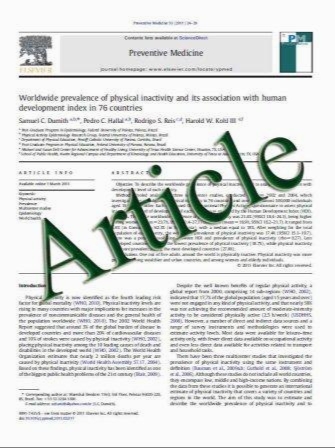Subfoveal choroidal thickness in typical age-related macular degeneration and polypoidal choroidal vasculopathy
- نوع فایل : کتاب
- زبان : انگلیسی
- مؤلف : Hideki Koizumi & Tetsuya Yamagishi & Taizo Yamazaki & Ryo Kawasaki & Shigeru Kinoshita
- چاپ و سال / کشور: 2011
Description
Purpose To investigate the subfoveal choroidal thickness in eyes with typical age-related macular degeneration (AMD) and polypoidal choroidal vasculopathy (PCV), using enhanced depth imaging optical coherence tomography. Methods Retrospective observational case series of 44 eyes of 44 patients (12 females and 32 males) with typical AMD or PCV located in the subfoveal region. Cross-sectional images of the choroid of each of the involved eyes were obtained by a spectral-domain OCT. The choroidal thickness under the fovea was retrospectively studied. Results Of the 44 eyes involved in this study, 21 eyes were diagnosed as typical AMD and the other 23 eyes were diagnosed as PCV. The difference in subfoveal choroidal thickness between the eyes with typical AMD (245 ىm) and those with PCV (293 ىm) was statistically significant, even after adjusting for age, spherical equivalent, and gender distribution (P=0.045). When compared to eyes with subfoveal choroidal thickness less than 300 ىm, those with subfoveal choroidal thickness of 300 ىm or more were 5.6 times more likely to have PCV (adjusted odds ratio 5.60, 95% confidence interval 1.30–24.0, P=0.021). Conclusions The choroid under the fovea was thicker in eyes with PCV than those with typical AMD. This result suggests that the choroidal vascular lesion seen in PCV may not be just the choroidal neovascularization accompanied by saccular capillary dilations at the border, but may have a significant structural difference in the choroid compared to typical AMD
Graefes Arch Clin Exp Ophthalmol (2011) 249:1123–1128 DOI 10.1007/s00417-011-1620-1 Received: 29 September 2010 / Revised: 21 December 2010 / Accepted: 6 January 2011 / Published online: 28 January 2011


